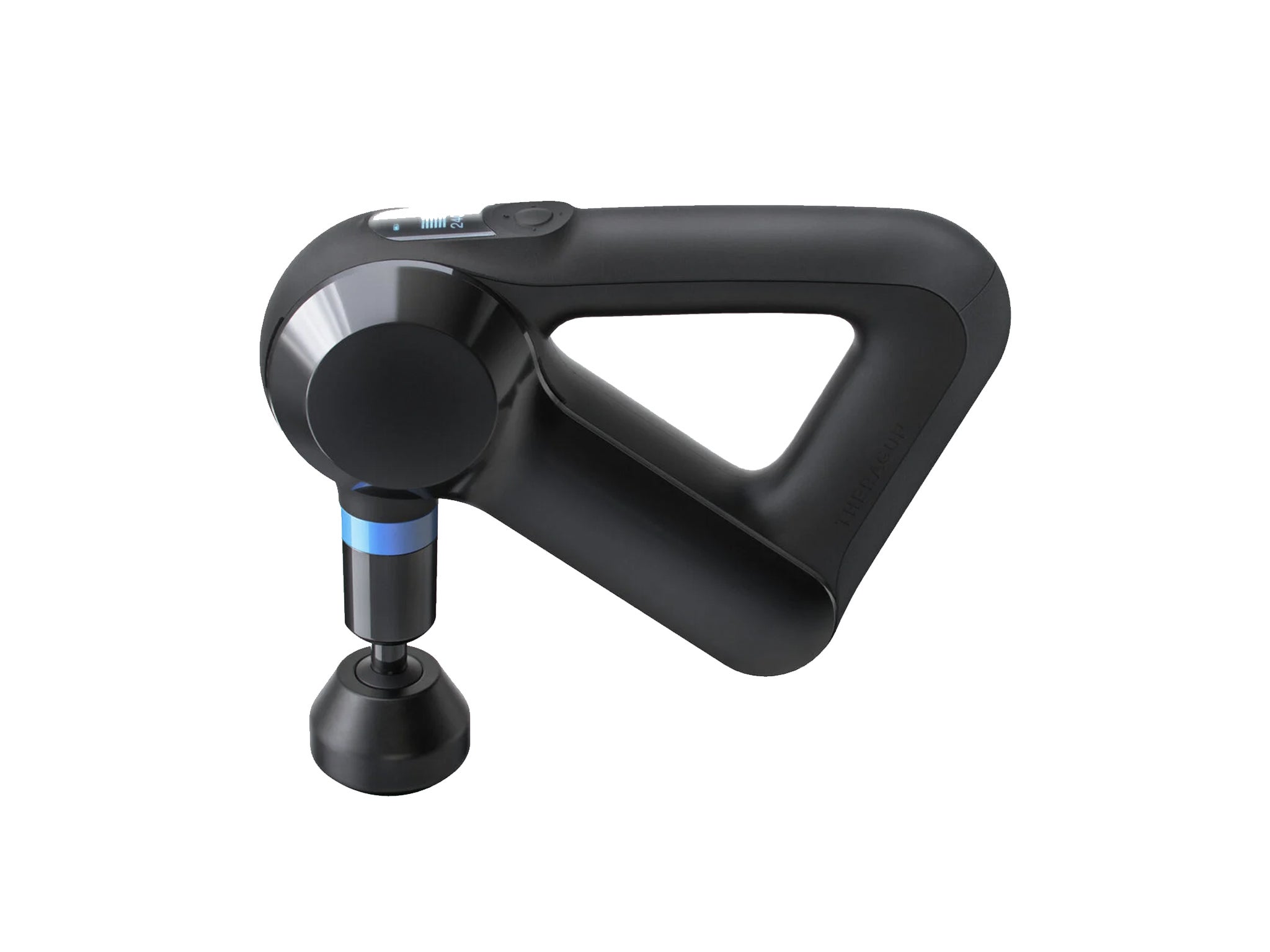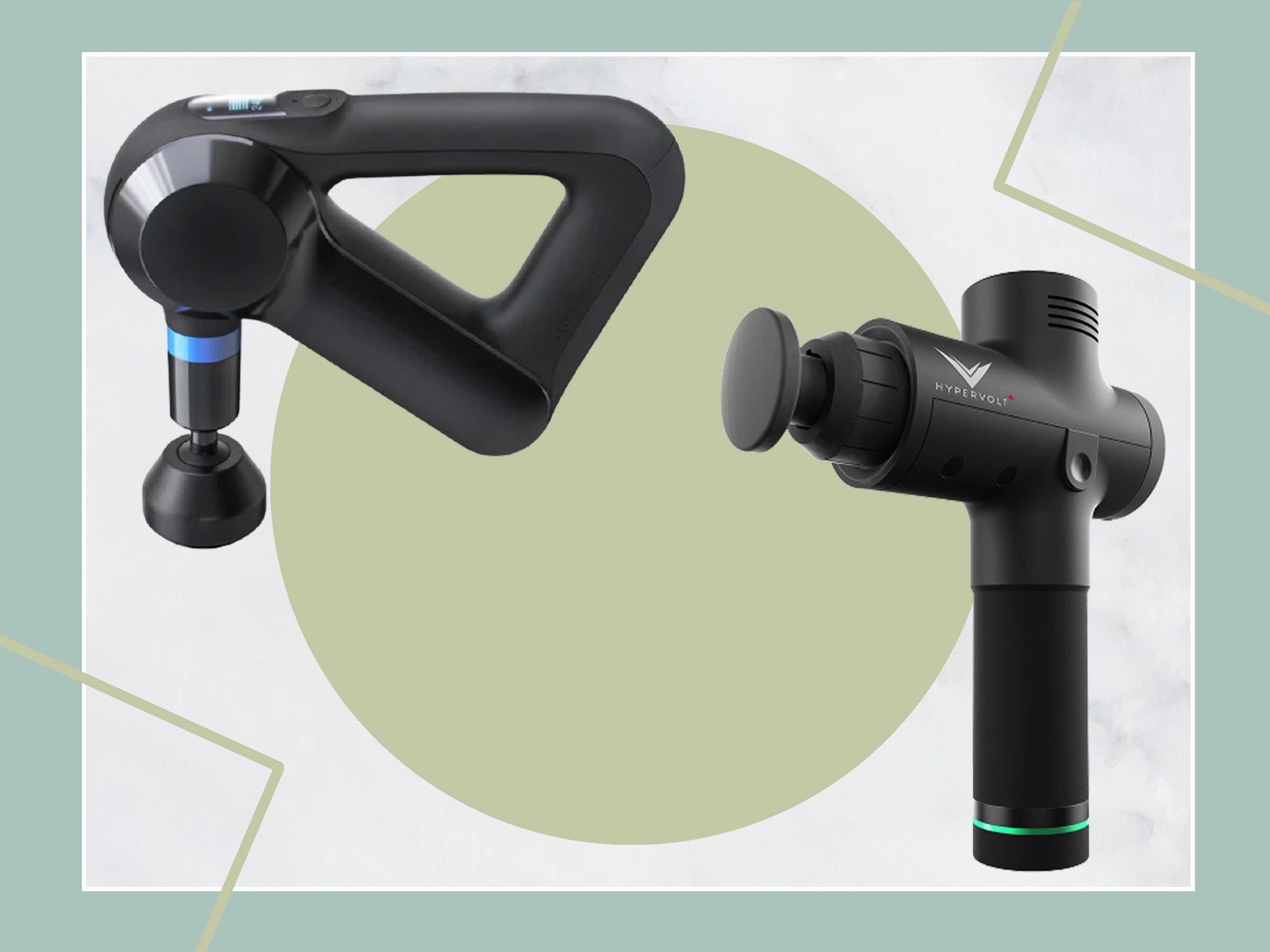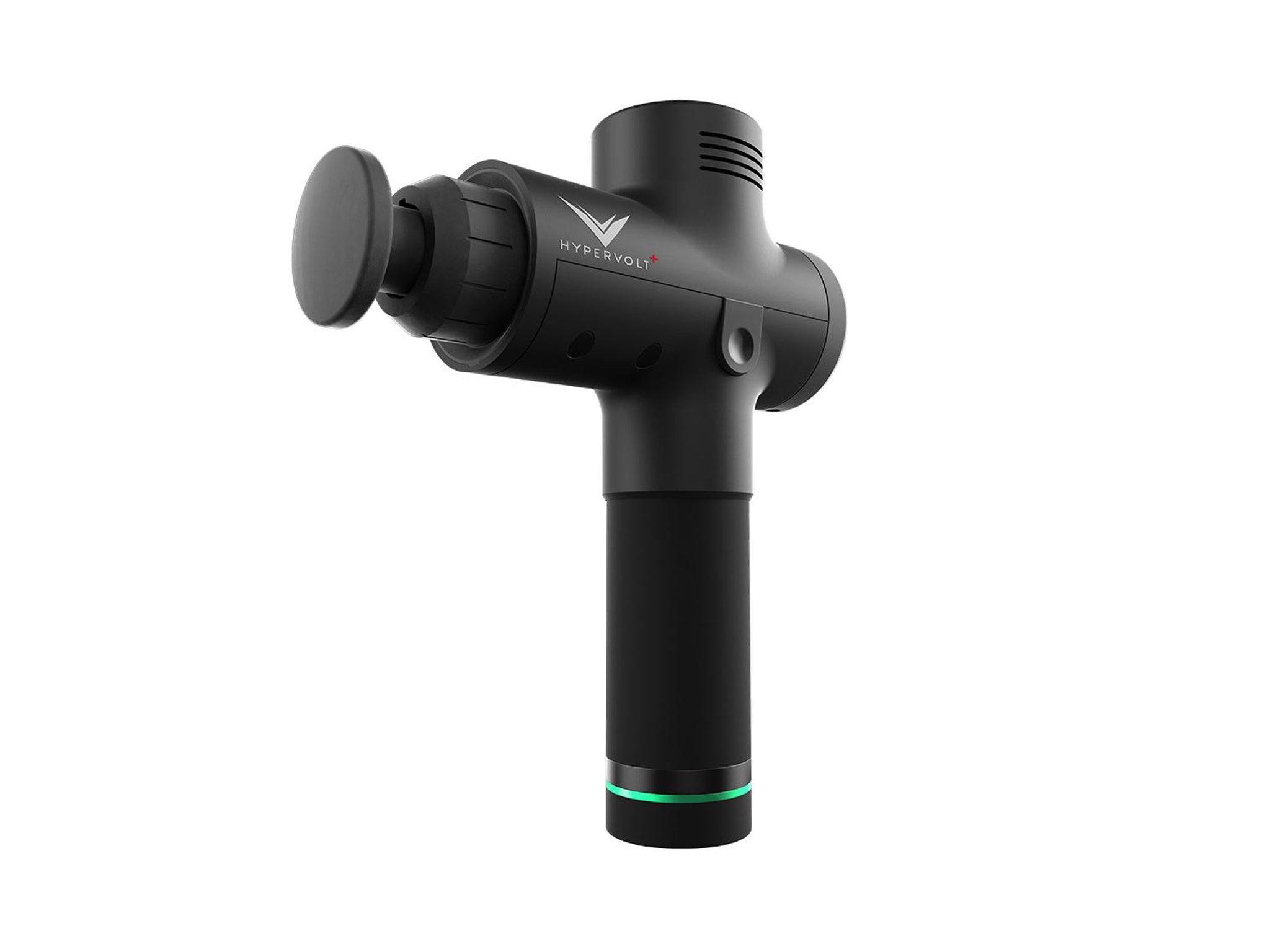
The Independent's journalism is supported by our readers. When you purchase through links on our site, we may earn commission. Why trust us?
Hypervolt vs Theragun: Which at-home percussive massage tool is best?
The portable masseur can treat injuries, soreness, strains and more

Imagine being able to treat yourself to a deep tissue massage after every run, walk or day at the desk, but with none of the expense or pleading with partners luxury self care usually involves.
A percussive massage device is a portable masseur. There’s no getting around it, they look and sound like power tools – except that the head is a soft fitting that’s rounded or edgy depending on what muscle group you’re working on. This reverberates against your skin with as much or as little pressure as you need.
Typically used by professional athletes for recovery and injury treatment and prevention, handheld massage devices have recently broken into mainstream fitness. But don’t let their reputation among American football stars and Olympians intimidate you: they are as brilliant for casual athletes and desk-bound office workers as they are elite sportspeople.
Our reviewer, a runner, found that the Theragun treated her life-long ITB imbalance as effectively as the standard foam roller, but with none of the agony.
Two companies – Therabody and Hyperrice – have cornered the market for entry-level, professional quality devices. These are massage devices that can drive the knots out of Premier League footballers’s legs just as easily as they can treat your laptop fatigue. We tested a model from each that was around the same price point – the Theragun elite and the Hypervolt plus – for a fair comparison.
Read more:
Both devices come with apps that connect to the device over Bluetooth, and that help guide you through routines for general health and recovery as well as specific programmes for certain sports and injuries.
We followed similar programmes on each app, as well as targeting injuries and strains when they came up. Both devices came with five very similar attachments, so we reviewed them side by side to see which device performed best with all our testers.
We looked for ease of use alone – because, really, that’s the point of a portable massage gun – as well as effective relief of pain, and general improvements in movement, which we measured (scientifically) by our ability to reach further in various yoga poses.
You can trust our independent reviews. We may earn commission from some of the retailers, but we never allow this to influence selections, which are formed from real-world testing and expert advice. This revenue helps to fund journalism across The Independent.
Theragun elite

Maximum percussions per minute: 2400
Speed settings: Five
Weight: 2.2lbs
With its closed, triangular grip, malleable attachments and LED display, the Theragun elite is the perfect massage gun for keeping on top of your own aches and pains. With five speed settings and a brilliant app, available on both Android and IOS devices, we also found it was our favourite for treating acute injuries.
It feels like a power tool – and we mean that as a compliment, because it wears its power well. Even at the very top speed, the device never feels like it’s out of control, or is going to hurt you. That’s in large part because of the triangular grip, which feels sturdy even for smaller hands, and because of the way the attachment heads “lock” securely onto the device.
Despite being just a fraction cheaper, we preferred the five attachments that came with the Theragun elite to the attachments that came with the Hypervolt plus. Made of closed-cell foam, they felt softer and less aggressive, particularly when massaging an injured area.
They also felt a little bit more expensive because of that pliant give. We also tested two extra attachments that you can buy separately: a super soft attachment for injury, and a dual head attachment for the spine. Both were excellent, but you don’t need to splash out unless you have a specific need.
The Theragun was the noisier of the two guns we tested at low speeds, although at its maximum speed (which is quite a lot lower than the Hypervolt plus) it was much quieter. At the lower ranges, it purrs – having tested an earlier generation of Theragun before, we were amazed at the difference.
We loved the heads-up-display, which tells you how much battery you have left, what speed you’re on, and whether your Bluetooth is connected. The app was really easy to use, and impressive tech: it changes the speed of the gun for you as you work through a programme, and gives you feedback about whether you’re applying enough pressure or not. All that means that you feel like you can properly harness the raw power of the device without fear of hurting yourself.
In a couple of areas, that would matter if you were a professional or treating other people, the device trails just slightly behind the Hypervolt: it doesn’t reach the same level of percussions per minute, its doesn’t have the same instant pressure feedback as the Hypervolt’s LED, and it doesn’t have the same battery life (two hours versus 2.5) or the same detachable-style battery. But it is much easier to use on yourself: it’s lighter, and the triangular handle means it’s easy to reach lower down your own back, even if you have shorter arms. The high quality case that the gun came with really impressed us: at this price point, we felt like some kind of case is a must.
Hypervolt plus (with Bluetooth)

Maximum percussions per minute: 3200
Speed settings: Three
Weight: 3lbs
Sleek, glossy and refined, the Hypervolt plus is the device you’ve seen pummelling the sore muscles of athletes in the American NFL and NBA. Our reviewers’s own long distance running, cycling and climbing pales in comparison, but this device was still amazing when it came to managing our low-level aches, and treating the sore shoulders and cricked necks of our housemates: even for a novice, the grip (a right angle, like a hairdryer), and the rubber casing gives you amazing purchase.
Reaching an incredible 3200 percussions per minute at its highest level, the device is made for professional athletes and their masseurs: we found the top setting a little bit too much, and the device does get noisy when you run it at this speed. But in the right hands, that level of speed would be incredible for recovery. Our male tester, who has longer arms, preferred the grip to the Theragun; one of our female testers, who has smaller hands, found it harder to reach tight spots on her back without the extra angle of grip afforded by the Theragun’s triangular hold.
At lower speeds it is quite remarkably quiet. Advertising campaigns for percussive massage guns suggest you could use them while you’re watching TV, and you could just about get away with this operating the Hypervolt at its lowest setting. It looks undeniably gorgeous: the glowing LED band at the bottom of the grip and the matte finish all make it the kind of device we would break out at the gym.
While it doesn’t have the same LED readout as the Theragun, the pressure sensor – three white lights at the top of the device that let you know how hard you’re pushing – was intuitive, and unlike the Theragun, didn’t involve connecting to an app. That said, the app itself (available on both Android and IOS) is superb: it has a huge library of workouts, and links into your existing fitness apps – like Strava – to help it recommend recovery programmes that will tie into your current activity.
The Hypervolt outperforms the Theragun in the areas mentioned above, like battery life and percussion per minute, but it also lacks the variety of speed settings, the cushiness of the attachments, and the intuitive grip. We also found the power switch on the base a little fiddly, and missed having a case to store the device in: you can buy one for £60, but this felt a bit much when the cheaper Theragun comes with a free case. The ability to remove and replace the battery would be absolutely invaluable if you were using the device in a training setting or as a professional – but a replacement battery comes at a pretty eye watering £96.
The verdict: Hypervolt vs Theragun
If we’re honest, our ideal percussive massage gun would actually be a hybrid of these two: a device with the sleek design and quiet hum of the Hypervolt plus with the closed-foam attachments and speed range of the Theragun.
Overall for our reviewers, the Theragun emerged as the favourite. The triangular grip and softer attachments made it intuitive to use, immediately helpful and un-intimidating. It was easy to reach sore back and neck muscles thanks to the grip and the slightly lighter weight, too, which made it ideal for our major, very athletic, source of injury: sitting at a computer for too long.
The Hypervolt is an incredible piece of kit, though, and it’s easy to see why it’s become such a must for CrossFit fans and professional athletes. The incredibly high rate of percussion it reaches, the direct grip and the smooth IOS app make it seriously effective in the right hands. We would pick this one if we intended to use the device on teammates or as part of a recovery programme.
Recovering from leg day has never been so simple with these muscle rubs